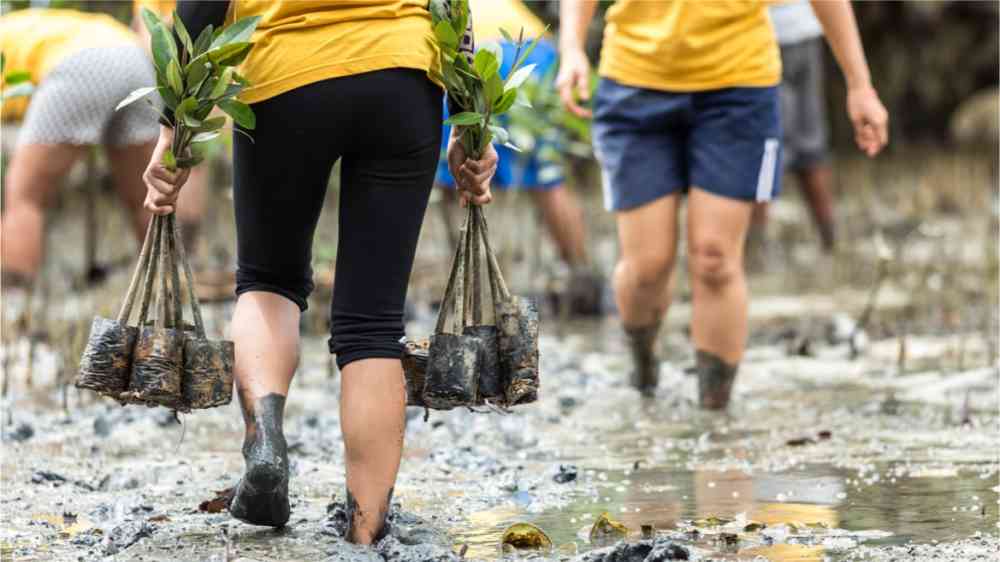Vulnerable coastlines
Unfortunately, precisely in these rural densely populated Asian regions, mangroves have in the past been cleared to free up land for other uses such as aquaculture. This has made these coasts vulnerable to rapid erosion. Restoring mangroves seems a logical solution to reverse this process and protect these densely populated coastlines. However, this requires understanding if mangroves can cope with extreme rates of relative sea level rises, as experienced in these subsiding areas.
Since 2015 NIOZ researcher Celine van Bijsterveldt visited Indonesia regularly during her studies and her Phd. “I saw how much the people suffered from coastal erosion and frequent inundation,” Van Bijsterveldt says. “To be able to answer if mangroves can help, I started with obtaining reliable measurements of the subsidence rate. This is extremely complicated if you work so remote.”
Local land subsidence causes high relative sea level rise
“Typically, measuring subsidence requires expensive complicated equipment,“ says Van Bijsterveldt. “As such instruments are lacking in these remote areas, we developed two novel and low-cost methods to approximate relative sea-level rise. In the mangroves we measured the sea level rise by simple pressure gages, that are normally used to measure tides. And in the village we analyzed how often people increased the height of the floor and the roof of their houses. Doing so we demonstrate how 20 km of rural coastline and its vegetated foreshore, neighboring a rapidly subsiding city, were experiencing alarming rate of sea level rise.” Surprisingly, villages experienced much higher rates of sea level rise than mangrove forests, with dramatic consequences for local communities.
